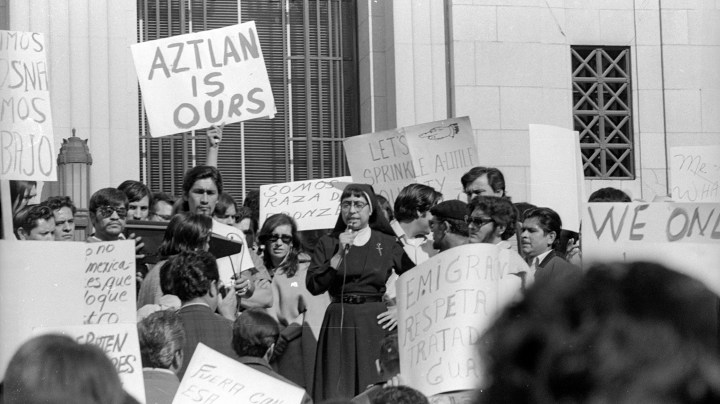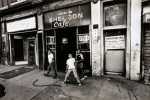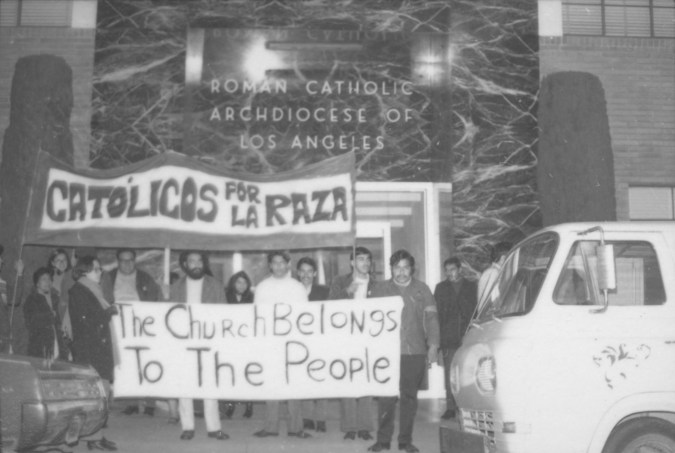UCLA’s Chicano Studies Research Center Adds Huge Archive to Highlight Faith & Spirituality

A nun speaks to protesters in front of the California State Building in downtown Los Angeles at an immigration march against the Dixon-Arnett Act, January 22, 1972. Photo by Pedro Arias. La Raza Photograph Collection. Courtesy of the UCLA Chicano Studies Research Center.
The University of California, Los Angeles (UCLA) is adding more than 14,000 rare photographs and 125 audio recordings to its archive. Their latest project hopes to fill in the contours of stories we might not have known before.
UCLA’s Chicano Studies Research Center (CSRC) has been around since 1969, and it’s considered one of the central hubs for Chicano and Latino research. Scholars there have largely focused their efforts on preservation. Since 2001, they’ve offered major projects that take a closer look at our communities’ art, social sciences, and more.
The latest undertaking goes deep into complex religious, faith and spirituality movements in Mexican American cultures. A $349,000 grant from the National Endowment for the Humanities made the project possible.
A three-year initiative titled “Religion, Spirituality and Faith in Mexican American Social History, 1940-Present” will reportedly allow CSRC to process both recently acquired and legacy collections. The collections fall into three categories: material that looks at faith-based organizations, religious and spiritual leaders that work outside their positions in religious institutions, and individuals who provide insight into “the role of religious belief in day-to-day life and civic engagement.”

Hyperallergic reports that the collections include the work of people such as photographer Oscar Castillo, who documented life in Los Angeles and South Texas in the ‘60s and 70s and Franciscan nun and printmaker Sister Karen Boccalero. Ephemera around organizations such as the Church of the Epiphany, Homeboy Industries, Católicos for La Raza also make up the collection.
Chon Noriega, the project and CSRC Director, tells Remezcla that the one way to think of the effort is as one that focuses on the “spiritual capital” of the community that is already archived in existing collections, but has not been identified or described easily enough for scholars to find.

“Researchers have documented the sociological fact of religion as a significant factor among U.S. Latinos with 91% identifying with a religion or faith. So you have a highly religious community, but from an archival perspective, collections have been described in largely social and cultural frameworks. That fails to account for religion as a component of the social, political, cultural and artistic life of the community,” Noriega says.

Not only will the work become accessible to scholars through digitization efforts, CSRC will use some of the money from the grant to train and mentor students who want to work in archival research.
And, Noriega notes, the initiative will shed light on the diversity of Latino culture and the different ways in which faith and spirituality play a role in such a multitudinous community.
“It is also important to acknowledge that ‘religion’ does not mean one thing for all Latinos,” he says. “We’re very diverse, and we focus on different things: the church as an institution, the question of moral behavior, theology and spirituality (which can also overlap with indigeneity).”
